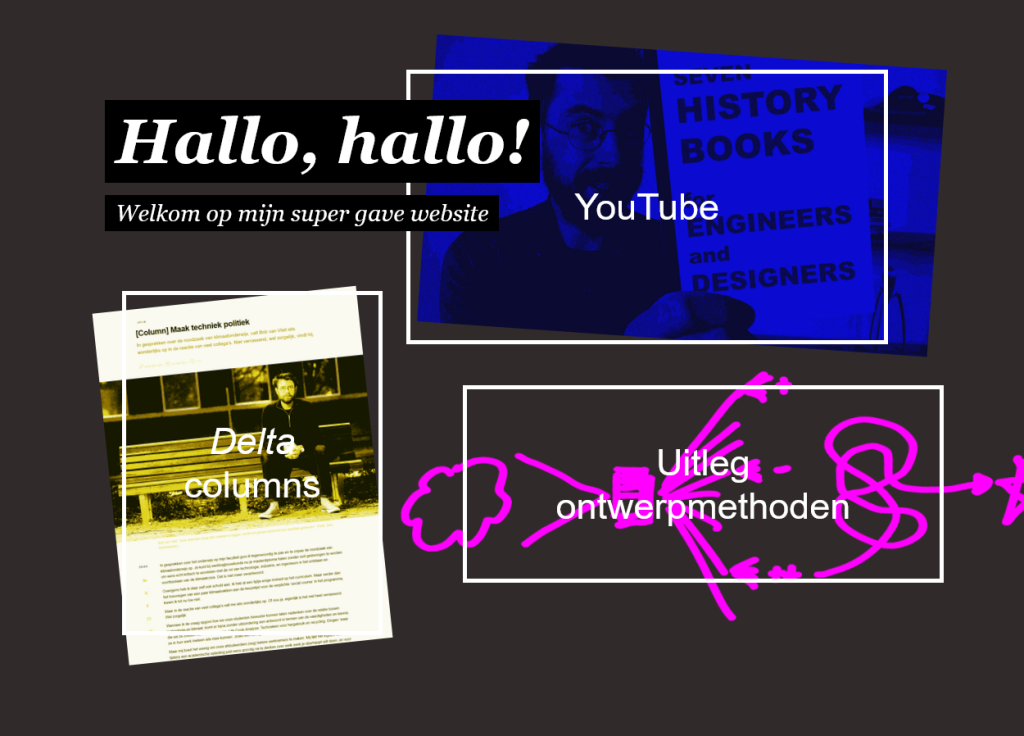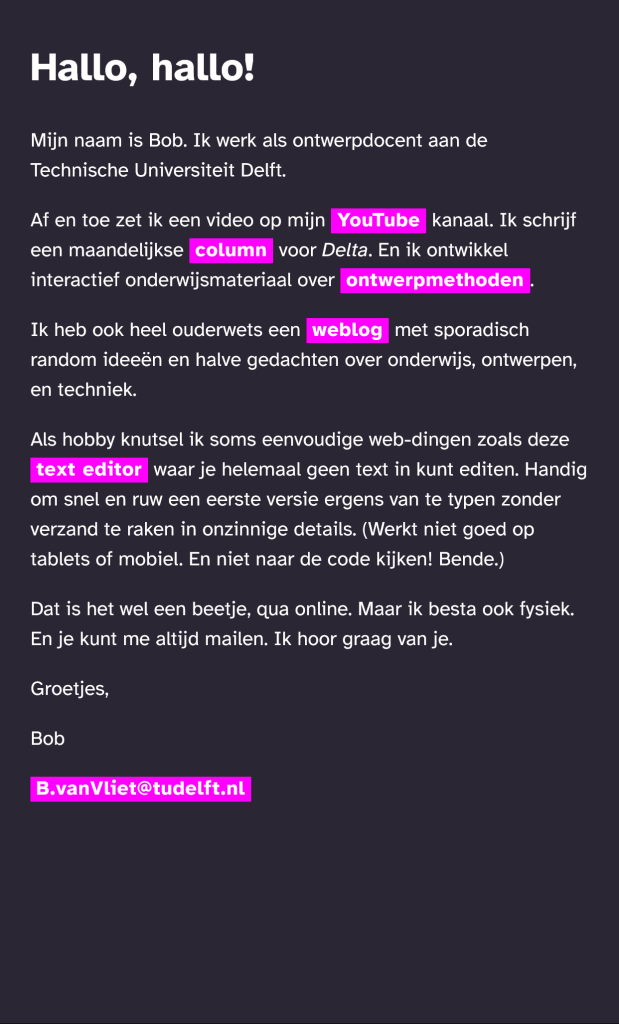In April, I’ll teach a new round of the course ‘Designing Medical Technology’, an introductory design course for students in the BSc programme ‘Clinical Technology’. I’ve been making an effort in past years to collect assignments focused on improving healthcare in the Global South and to emphasize the downsides of high-tech high-energy healthcare systems.
I still feel conflicted about the course as it is. The goal is to teach basic design skills and have students experience a design process from problem definition through exploration and development to validation. But should you even teach other things than the climate crisis, in a time of climate crisis? If so, how?
One way to say ‘Yes’ to that is when you teach a skill that is valuable or necessary even to deal with the crises we’re in. And designing seems to qualify for that.
OK, so if we accept that it’s perfectly sensible to still teach design in the current situation, how should we teach that now? Because it’s certainly not a given that students are going to use their design abilities to deal with the climate and social justice crises. In fact, I feel there is quite a big risk that the opposite will happen if they exercise those skills within the current extactive and destructive system.
Design problems that lend themselves to introductory courses often call for a new or improved product. When you focus on functionality, reliability, or usablitity, the results (if designed by first-time novice designers) are likely more resource and energy intensive instead of less. Electronics are added; extra materials are used; whole new product categories are invented.
So why not focus on sustainability instead? Wouldn’t that be an easy fix? I’m not so sure. This is where the conflict is, for me. Because function, construction, and use can be straightforwardly and realistically explored and experimented with by naïeve designers (through sketching and modelling). And that experimental, explorative way of thinking (by doing and making) is at the core of learning to design.
I’m afraid that the (abstract) systems thinking required for going after more sustainable systems is both too complex and too difficult to make accessible in an understaffed, too short, introductory course. At the very least, my own toolkit of exercises, prompts, and instructions has developed around experimenting with the more basic industrial design domains. And therefore those do not lend themselves well for a systems-critical approach. Industrial design starts from the assumption that the ‘solution’ to ‘the problem’ is going to be an industrially produced, commercial product. Something that a company can market and turn a profit on. Something that does something new, or outperforms current products. Industrial design tends to lead to more.
But what we need, of course, is to start doing less. Use less energy. Waste less. Dump less. Rely on complex supply chains and cheap exploitative labor less. Fewer electronics. Fewer products. Coming to terms with the fact that our dreams about improved medical devices are often actually impossible as soon as we admit the rest of the world, and the future of our world, into the system boundary of ‘the problem’.

